HOUSE SIGNS
1. The White Swan
![]() Nerudova 49
Nerudova 49
Prague houses weren’t given identifying numbers until 1770. Empress Maria Theresa was a great one for bringing the famed Habsburg trait of orderliness from Vienna to the banks of the Vltava. Before that, homes were known and located by a charming but confusing system of allegorical symbols. Although you can still find such emblematic addresses throughout the older parts of the city, Nerudova street in Malá Strana has the highest concentration of house signs in the city. Originally many of them had local significance, although today much of their meaning has been lost. The White Swan is one of these, and probably originated as a golden goose (not to be confused with the downtown department store of the same name, Bílá Labut’).
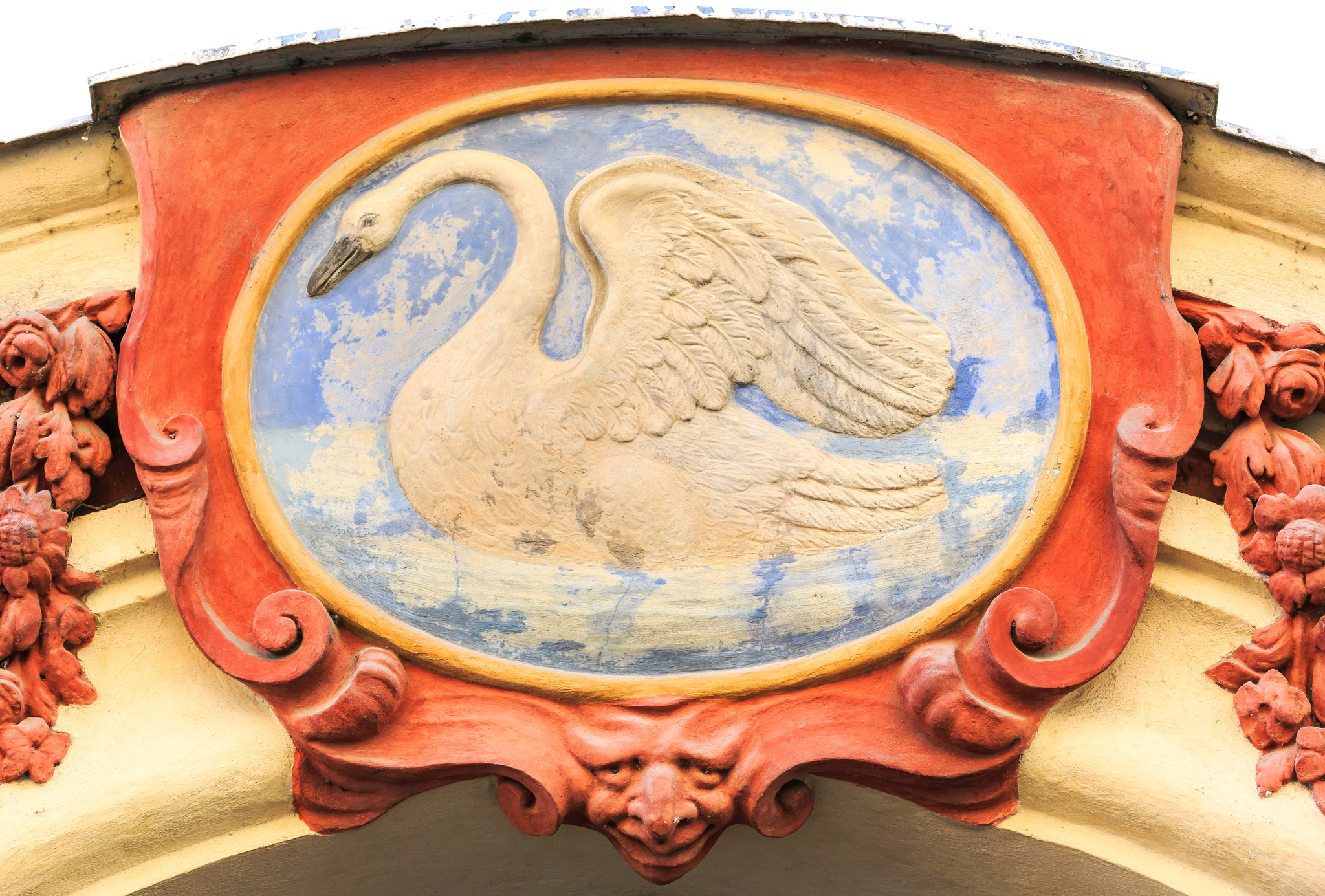
The sign of the White Swan
2. The Two Suns
![]() Nerudova 47
Nerudova 47
This house was the birthplace of the much-loved Czech poet and author Jan Neruda (1834–91), after whom the street is named. Traditionally, this was the writers’ and artists’ area of Prague, and Neruda conveyed the Bohemian atmosphere of Malá Strana in his work. The connection continues today with the quarter’s many small art galleries and craft shops.
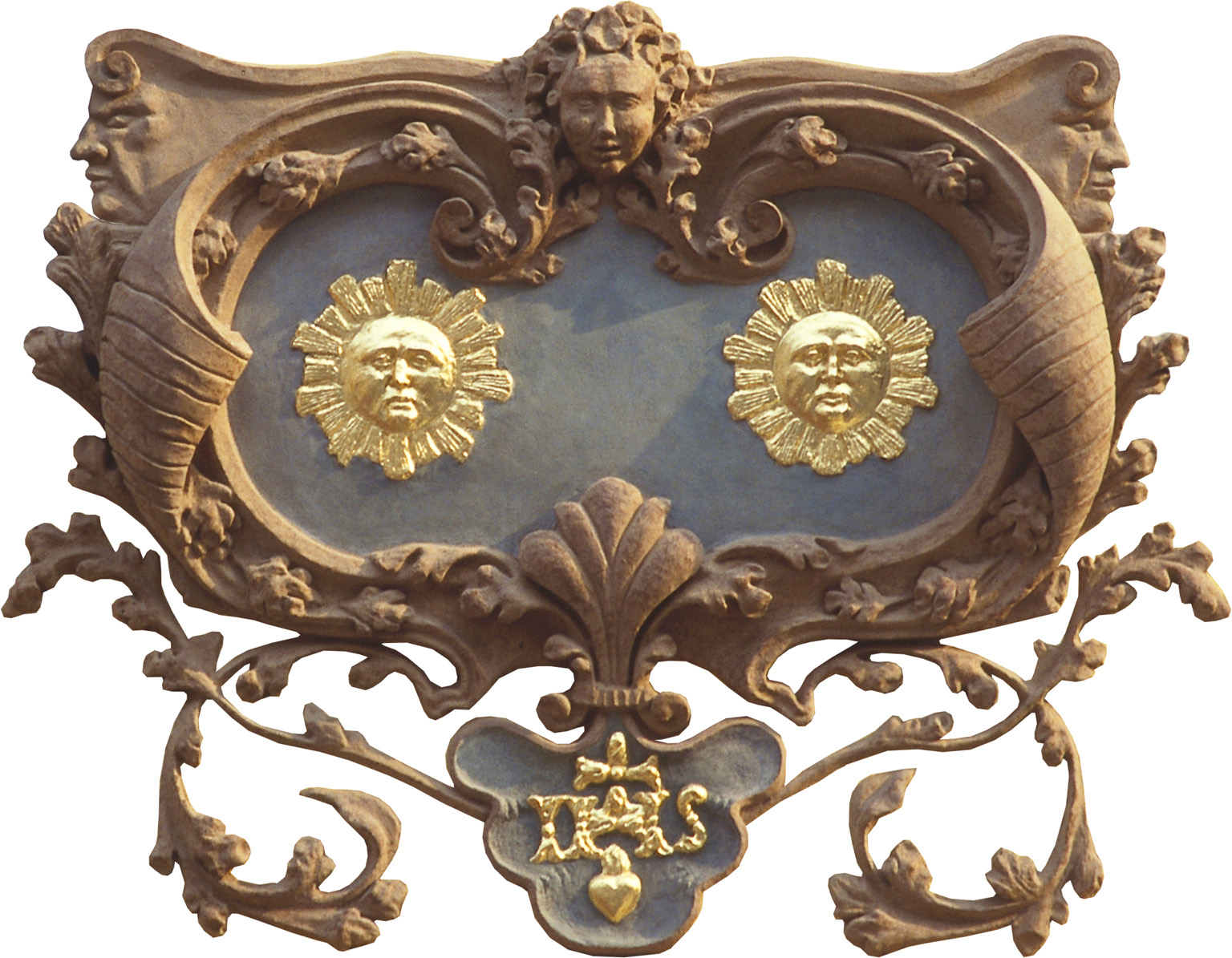
The Two Suns
3. The Golden Key
![]() Nerudova 27
Nerudova 27
Castle goldsmiths, such as the ones who worked at this house in the 17th century, paid fees to the city, unlike their colleagues who lived in the castle’s Golden Lane. As such, they were entitled to advertise their wares, as preserved today in this building’s façade.
4. The Red Lamb
![]() Nerudova 11
Nerudova 11
One of the street’s more unlikely symbols, the scarlet sheep adorning this façade has a significance so arcane, not even the current house owner can explain it. Not that it matters – it remains in place as one of the city’s many charming idiosyncrasies.
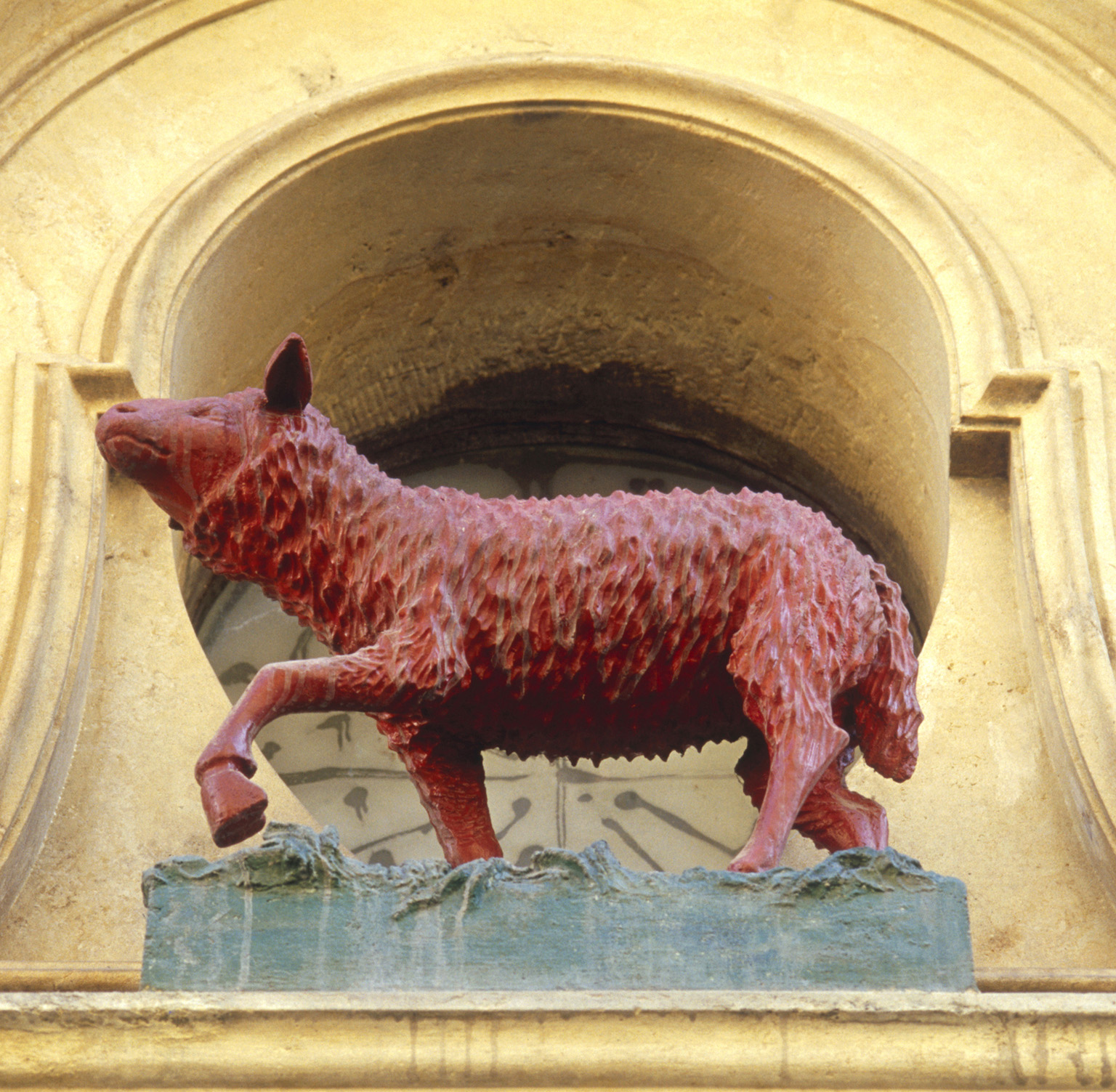
The statue at the Red Lamb
5. The Golden Wheel
![]() Nerudova 28
Nerudova 28
This house symbol may have had something to do with alchemy – the wheel represents a stage in the magnum opus, the process by which the base metal lead was purportedly turned into gold. Modern-day alchemists are usually more interested in the meditative aspects of the art, however.
6. The Three Fiddles
![]() Nerudova 12
Nerudova 12
They say a demonic trio screeches on their instruments here on moonlit nights. The house was home to a family of violin-makers in the early 18th century, and the sign advertised their trade. Like many of the other buildings on this street, it is now home to a restaurant.
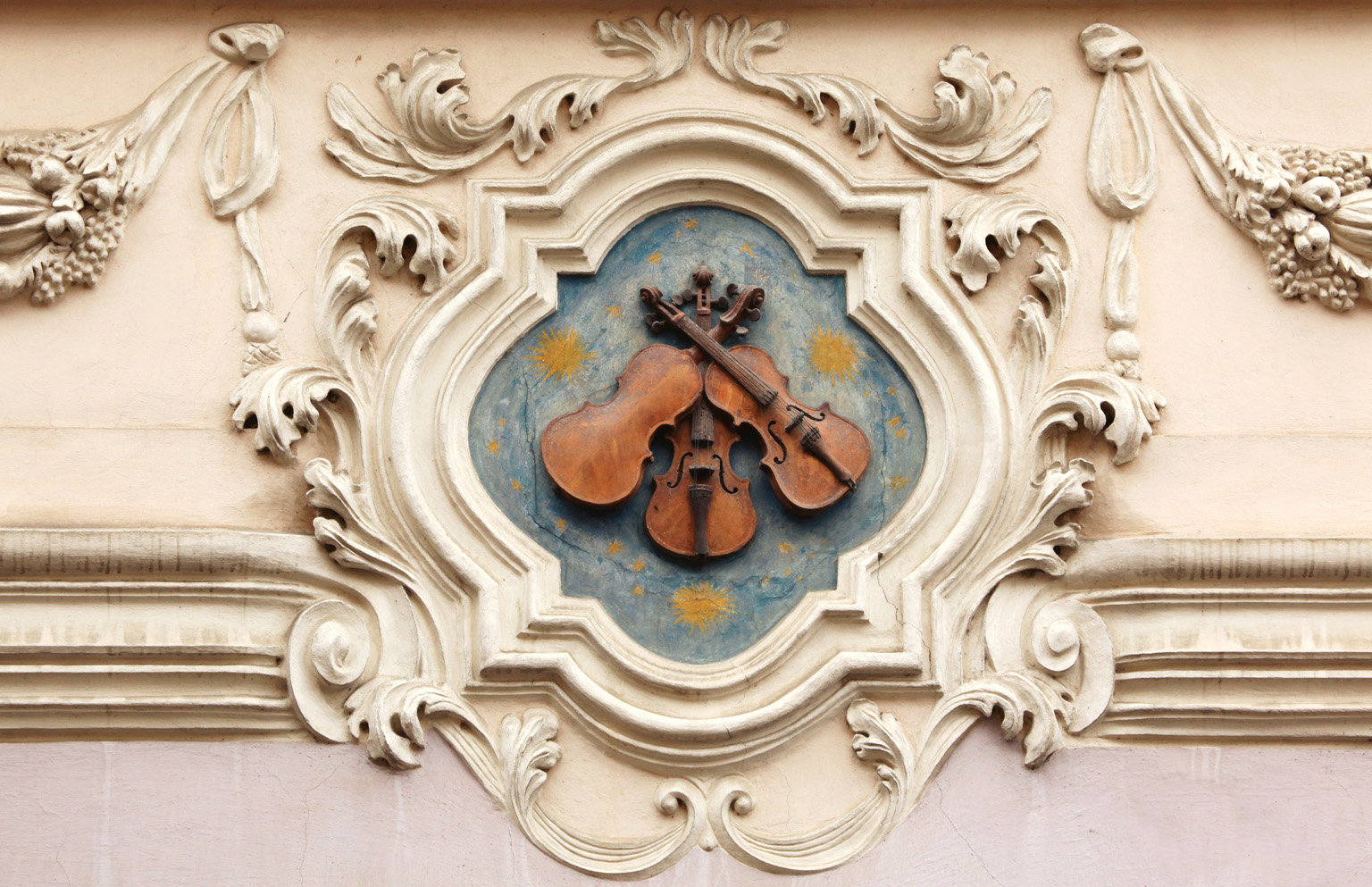
Beautifully crafted house sign indicating the Three Fiddles
7. The Three Lilies
![]() Nerudova 15
Nerudova 15
Although their image no longer adorns the façade, the three flowers remain atop the house. The house also lends its name to a feverish tale of passion and thunderstorms by Jan Neruda. Many of the author’s tales were set in houses such as this one.
8. The Devil
![]() Nerudova 4
Nerudova 4
Lucifer pops up as a cuddly character on houses all over town and in local legend, more a folksy trickster than a sinister prince of darkness. At this house he’ll tempt you to dine at the Restaurant U Čerta.

The Devil
9. The Green Lobster
![]() Nerudova 43
Nerudova 43
Who knows what they were thinking when they hung the crustacean above their door – probably trying to keep up with the neighbours at the Pendant Parsnip at No. 39.
10. St Wenceslas’s Horse
![]() Staroměstské náměsti 16
Staroměstské náměsti 16
Seen on the façade of Štorch House at the Old Town Square, this is a tribute both to the patron saint of Bohemia and the blacksmiths who shod horses bound for the castle.
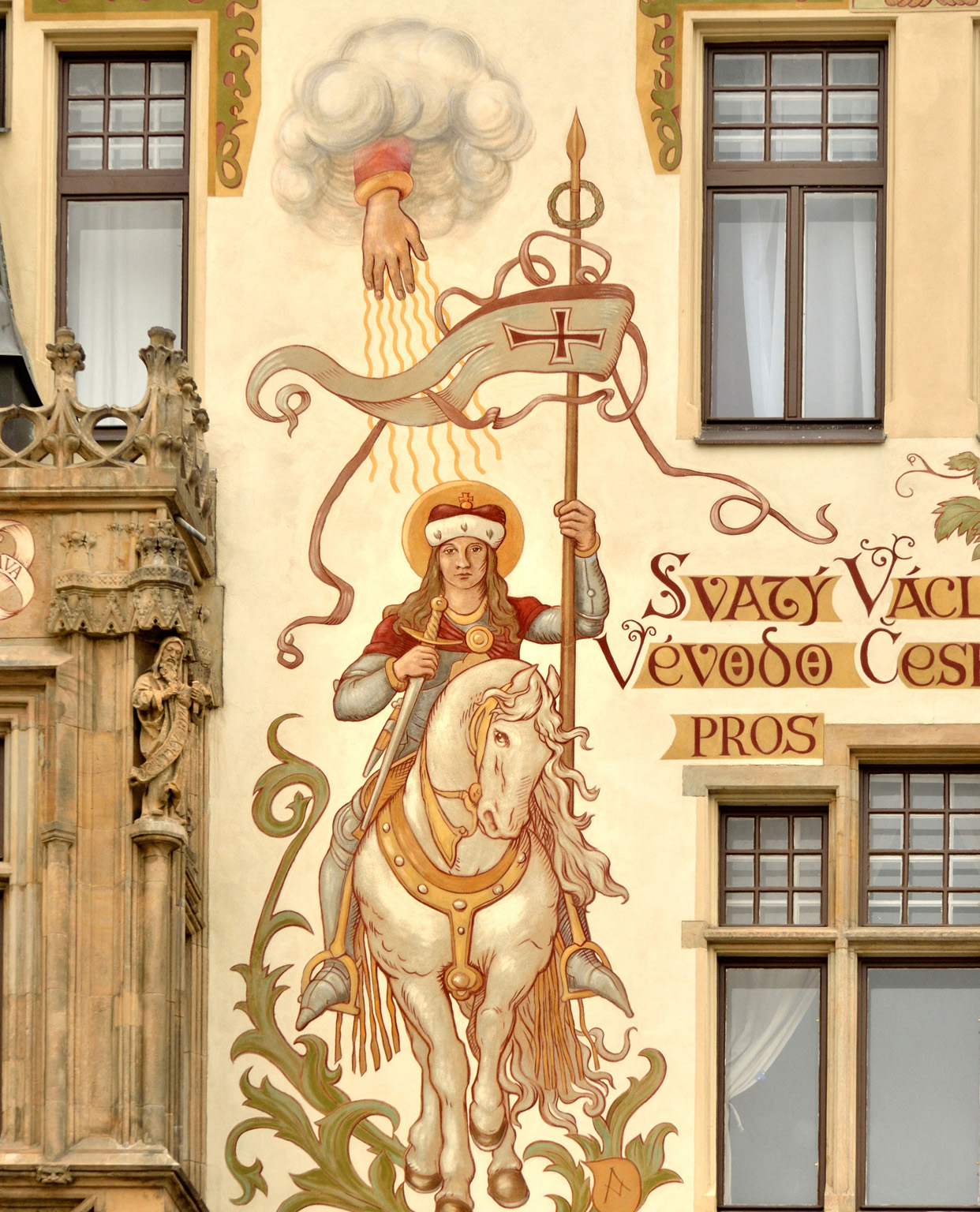
The image of St Wenceslas’s Horse
